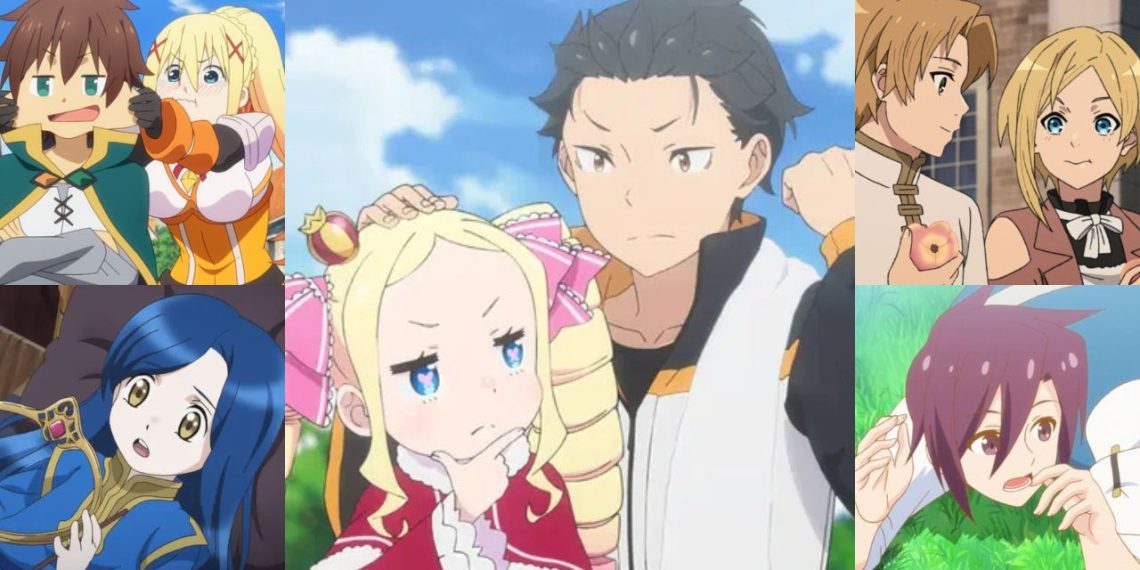Isekai anime is a popular type of fantasy story where characters are transported to a completely different world. The focus of these stories is often on the new world and the experiences that come with it.
This means that for an isekai anime to be really good, it needs to create a detailed and interesting world for the characters to go through.
The best isekai anime series do an amazing job at bringing these fantasy worlds to life. They offer viewers a sense of adventure as the main characters journey through unfamiliar lands filled with unique challenges.
One of the key things that make these fantasy worlds stand out is how different they are from our own. The environments, magic systems, creatures, and cultures all add layers of depth to the story.
However, even though these worlds are often very different, they can still include elements that feel familiar. Sometimes, the new world has features that remind viewers of real-life places, myths, or history.
This mix of the strange and the familiar makes it easier for fans to connect with the story while still being thrilled by the new experiences.
The characters’ adventures in these fantasy settings often involve epic quests or battles. The best isekai stories use these journeys not just to entertain, but also to show the characters’ growth as they face the challenges of the new world.
This adds an emotional layer to the story, making the characters’ victories and struggles feel meaningful.
A great isekai anime successfully combines an interesting new world with engaging characters and exciting adventures.
When done right, these elements come together to create an amazing escape that allows viewers to step away from everyday life and lose themselves in a completely different reality.
1) Philosophical Questions of Virtual Existence in Sword Art Online
In Sword Art Online, players find themselves ensnared in a virtual reality game, unable to log out. The story focuses on Kirito, a beta tester who is determined to conquer the game and secure his freedom.
As he handles this dangerous world filled with powerful foes and complex challenges, his skills as a player are put to the test.
The stakes are high, as death in the game means death in real life, making Kirito’s journey a gripping tale of survival.
However, Kirito’s story extends beyond the confines of the initial game. As the series progresses, he enters various new virtual worlds, each offering its own unique gameplay mechanics and stories.
These different worlds allows viewers to see the vast creativity within the game’s design and how each environment presents distinct challenges for Kirito and his companions.
These journeys help to further develop his character as he adapts to new rules and meets diverse allies and enemies along the way.
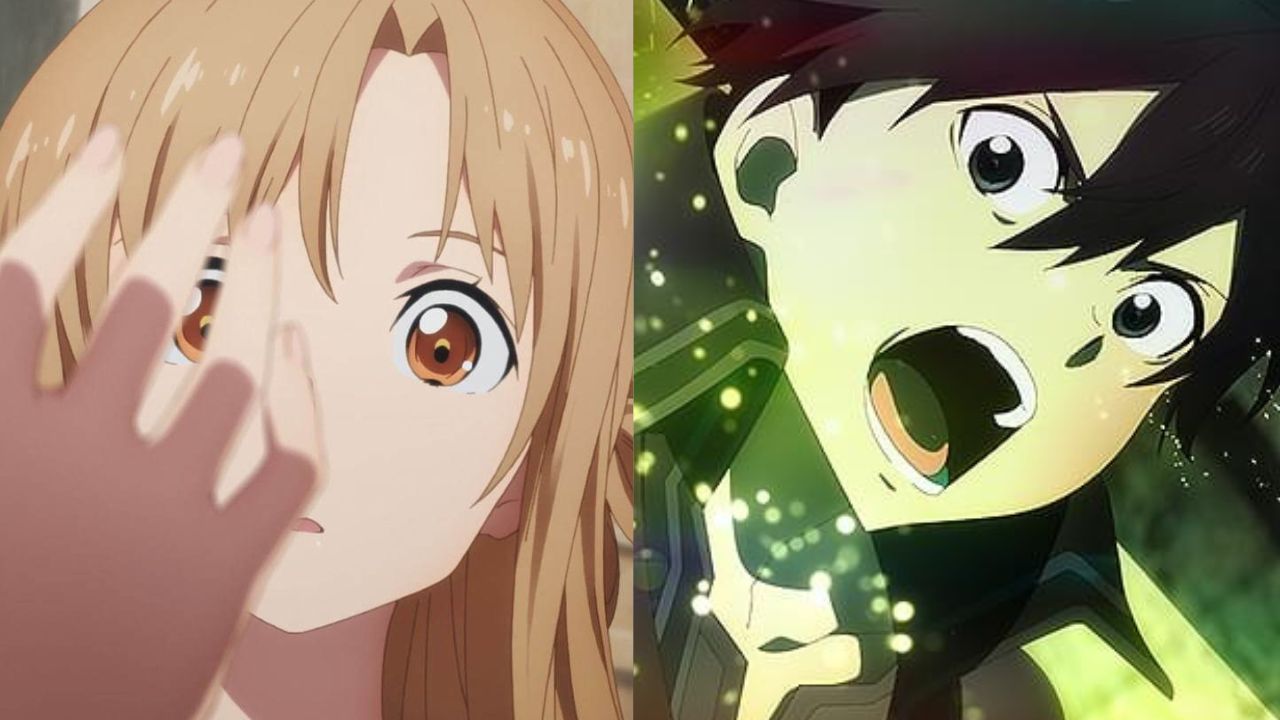
While the series primarily showcases the thrills of virtual gaming, it does not neglect the significance of the real world.
Interactions between the characters in their actual lives provide context for their experiences in the game, highlighting how their virtual adventures impact their relationships and identities outside of it.
This dual story enriches the story, as it allows the audience to reflect on the connection between the two worlds and the effects of immersive technology on personal lives.
The contrast between the virtual worlds and the real world prompts deeper look of contemporary issues.
The characters grapple with themes such as isolation, the desire for connection, and the effects of technology on society.
By juxtaposing the exhilarating experiences within the game with the struggles faced in real life, Sword Art Online encourages viewers to consider how gaming can serve as both an escape and a reflection of reality.
As the series progresses into Sword Art Online Alicization, it goes through thought-provoking sci-fi concepts that raise questions about consciousness, existence, and the nature of reality.
The story evolves, challenging the characters to confront ethical dilemmas and the implications of artificial intelligence.
These philosophical inquiries enhance the depth of the storyline, making it more than just a typical adventure series.
Sword Art Online stands out as a compelling blend of action, adventure, and introspection. Its rich storytelling not only captures the excitement of virtual gaming but also addresses significant social themes that resonate with audiences.
Through Kirito’s journey, the series is focused on the complexities of life in a digital age, prompting viewers to think critically about their own interactions with technology and the virtual worlds they inhabit.
2) A Teenager’s Journey Through a Magical World in Re: Zero – Starting Life in Another World
Re:Zero – Starting Life in Another World is an isekai series that stands out by combining psychological drama, fantasy, and intense character development.
The story follows Subaru Natsuki, a teenager who is suddenly transported to a new world without knowing how or why.
Unlike many other isekai protagonists, Subaru doesn’t have any combat skills or special powers, except for a mysterious ability called Return by Death.
This ability allows him to rewind time whenever he dies, giving him a second chance to solve problems and prevent terrible outcomes.
However, every death takes a toll on Subaru’s mental and emotional well-being, adding a deeper layer to the story.
The series dives into the complexities of the new world, where magic, politics, and different races coexist.
The Kingdom of Lugnica, where most of the story unfolds, is full of diverse groups like humans, demi-humans, and spirits.
There’s also an ongoing conflict surrounding the royal selection, a political event to determine the next ruler of the kingdom.
Subaru finds himself entangled in this struggle as he supports Emilia, one of the candidates for the throne.
The different factions and their goals create a complicated backdrop, adding depth to the world beyond just battles and magic.
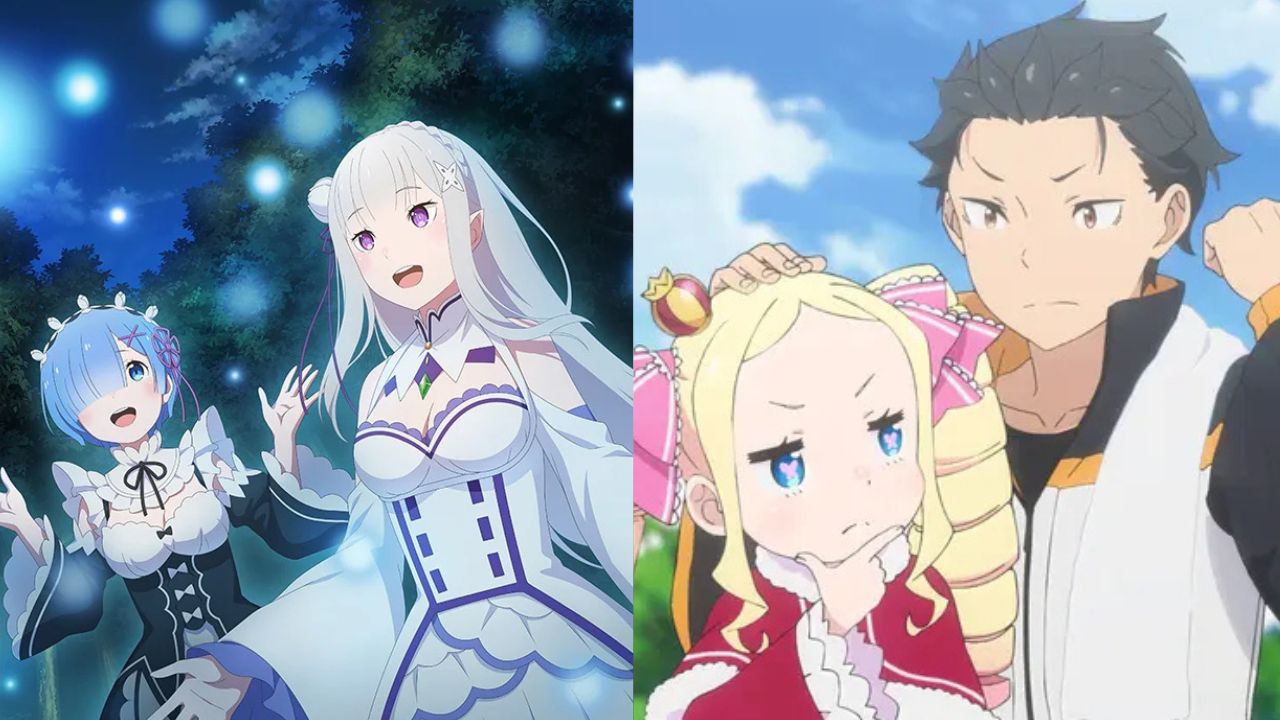
Subaru’s adventures frequently revolve around solving problems and protecting the people he cares about, but his journey is marked by many tragic events.
The Return by Death ability forces him to face his own failures repeatedly, giving him insights into the world’s darker aspects.
These challenges push Subaru to grow not just as a person, but also as a strategist, as he learns how to approach each situation differently.
His experiences with death, despair, and perseverance help build an emotional connection with the audience, making his victories feel more significant.
Magic and supernatural elements are key parts of Re:Zero’s worldbuilding. The use of magical abilities like spirit contracts, healing, and curses are not only central to the plot, but also reveal the rules and logic of the world.
Spirits play a particularly important role, as characters like Emilia and Puck have deep connections with these magical beings.
The series gradually explains the history and nature of magic in this world, showing how it affects both daily life and major events.
The variety of magical powers and their uses give a sense of wonder to the setting, while also grounding it in rules that make the world feel believable.
Monsters and mythical creatures also add to the worldbuilding, with beings like the White Whale and the Witch Cult playing significant roles.
These creatures often serve as obstacles that Subaru and his allies overcomes, and their existence ties into the world’s history and legends.
The Witch Cult, in particular, is a mysterious and dangerous group devoted to the Witch of Envy, Satella.
Their actions and influence on the world hint at a much deeper lore, revealing secrets about the past and the forces at play behind the scenes.
This helps to keep the story engaging, as viewers uncover more about the world’s mysteries along with the characters.
In Re:Zero, the characters’ growth is as important as the world around them. The relationships Subaru forms with others, like Emilia, Rem, and Beatrice, drive much of the story forward.
Their interactions often reveal different facets of the world, whether it’s through learning about magical contracts, the political tensions in the kingdom, or the history of certain characters.
Each character has their own struggles and ambitions, making their development feel meaningful and connected to the larger story.
The combination of Subaru’s personal journey with the broader worldbuilding elements helps to create a rich, immersive story that goes beyond typical isekai tropes.
3) The Unbreakable Bond Between Siblings Drives the Story Forward in No Game No Life
No Game No Life is a popular isekai series that gained a lot of attention for its imaginative world and unique premise.
The story follows two siblings, Sora and Shiro, who are incredibly skilled at games. One day, they are transported into a new world called Disboard, where everything is decided through games instead of violence or war.
This unusual setting adds a creative twist to the typical isekai formula, making the series stand out.
In Disboard, there are different races, and the humans are considered one of the weakest. To return home, Sora and Shiro helps the human race rise to the top by beating all the other races in various games.
The siblings are confident in their abilities since they have never lost a game before, which gives them the motivation to take on the challenge.
This sets the stage for their strategic battles, where they use their intelligence and teamwork to outsmart opponents.
The world of Disboard is governed by strict rules, and no one can break them. All conflicts, no matter how serious, it should be resolved through games.
These games are not always simple; they can be as complex as battles of wits or games of chance, where every move can change the outcome.
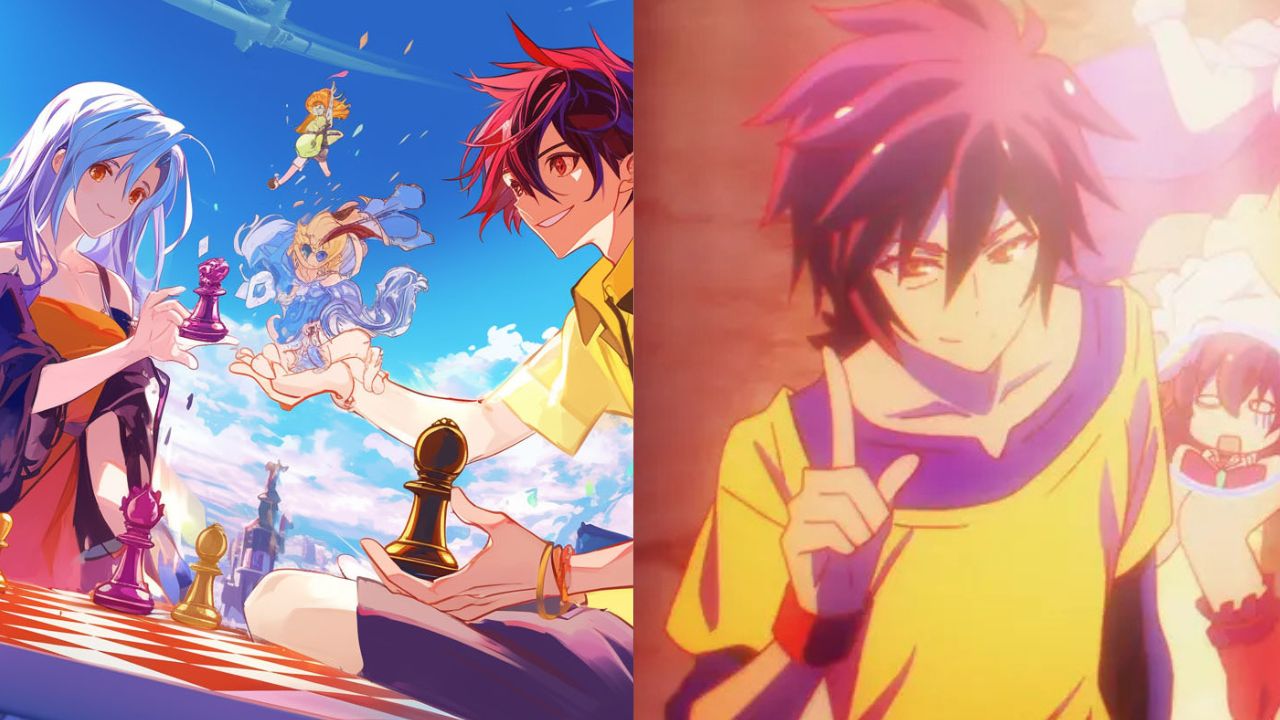
This element adds excitement to the story, as viewers never know what kind of game the siblings will face next.
One of the most appealing aspects of No Game No Life is its vibrant and visually stunning world. The anime brings Disboard to life with colorful worlds, detailed character designs, and creative game challenges.
Each race in the world has its own strengths and weaknesses, and the games they play reflect their unique abilities.
This depth of worldbuilding helps immerse viewers in the story, making them eager to see more of Disboard.
While the story is lighthearted and often humorous, it also goes through deeper themes like trust, intelligence, and the bonds between siblings.
Sora and Shiro rely on each other for everything, and their close relationship is one of the driving forces behind their success.
They face impossible odds, but their unwavering belief in one another helps them overcome every challenge.
Despite its popularity, No Game No Life has not had a continuation since its first season, leaving fans eagerly waiting for more.
The series’ mix of clever games, strong sibling bond, and intricate worldbuilding has left a lasting impact on the isekai genre, and many hope to see Sora and Shiro’s journey in Disboard continue in the future.
4) An Isekai That Finds Humor in Heroic Failures in KonoSuba
Konosuba: God’s Blessing on This Wonderful World! is a unique isekai that takes a humorous approach to the fantasy genre.
The story follows Kazuma, a teenager who gets transported to a new world after a sudden and embarrassing death.
Instead of becoming a hero, Kazuma finds himself surrounded by a group of misfit companions who aren’t exactly what one would expect in a fantasy quest.
There’s Aqua, a stubborn and self-absorbed goddess Megumin, a powerful mage obsessed with explosion magic despite being able to use it only once a day and Darkness, a masochistic crusader whose skills in battle leave much to be desired.
While Konosuba is known for its comedy, it also brings viewers into a vibrant world full of whimsical details and fascinating places.
The anime builds its fantasy setting with a mix of classic RPG elements, like guilds, quests, and skill upgrades.
Kazuma and his friends often visit the local adventurer’s guild, where they take on odd jobs and battle monsters, but the guild is also a place for socializing and funny interactions.
Even though the world has dangerous threats like demon generals, it doesn’t take itself too seriously, balancing the risks with plenty of humor and light-hearted moments.
The magic system in Konosuba adds to the charm, where spells and powers come with amusing limitations.
Characters like Megumin use their abilities in unconventional ways, making magic both useful and ridiculous.
Adventurers in this world can learn a variety of skills, but it requires effort and experience, giving the story a bit of a role-playing game feel.
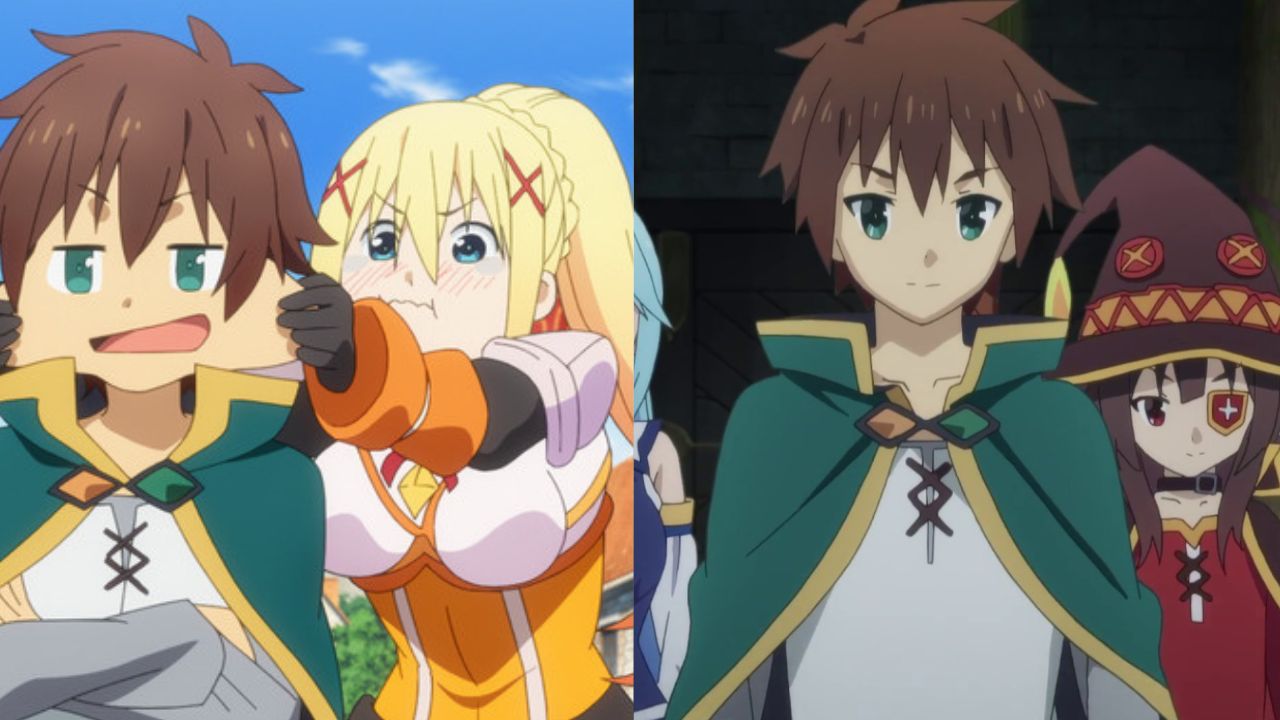
This system encourages creativity as the characters figure out how to make the most of their skills, even if they aren’t the strongest or most reliable.
Konosuba also go through the idea of flawed heroes who struggle with basic tasks rather than always saving the day.
Kazuma and his companions often fail spectacularly, resulting in chaotic situations that reveal the sillier side of the fantasy genre.
The story pokes fun at traditional heroic tropes by showing how even a group of dysfunctional adventurers can become unlikely heroes when they stumble into victories, often by sheer luck or strange coincidences.
The world itself is filled with various towns, dungeons, and fantastical creatures that feel familiar yet fresh due to the anime’s comedic take.
Each location has its own quirks and local customs, making the setting more than just a backdrop for jokes.
Whether it’s facing off against giant toads, dealing with haunted hot springs, or getting wrapped up in the personal problems of townspeople, the characters’ adventures add depth to the world and create opportunities for humor and character growth.
Konosuba shines as an isekai not just for its humor but for its ability to create an engaging and entertaining world.
It combines light-hearted adventures with a touch of satire, offering a different kind of escape for viewers.
The series cleverly balances the absurdity of the characters with a world that feels alive, where even the simplest quest can turn into a hilarious disaster, making it a standout among isekai stories.
5) Demon Lord to Fast-Food Employee in The Devil is a Part-Timer!
The Devil is a Part-Timer! flips the typical isekai formula by bringing fantasy characters into the real world instead of the other way around.
The story starts in Ente Isla, where the Demon Lord Satan is on the verge of conquering the land.
However, after a fierce battle with the hero Emilia, he is forced to retreat through a portal and ends up in modern-day Tokyo.
Without his magic, he adapts to his new life, taking up a job at a fast-food restaurant to make ends meet.
Satan, now known as Sadao Maou, strives to survive in this unfamiliar world, dealing with everyday struggles like paying rent and managing work responsibilities.
Despite being a powerful demon, he is determined to rise through the ranks at his job and eventually becomes a dedicated and hardworking employee.
This premise creates a humorous contrast between his dark past and his mundane life in Tokyo, making for a unique and entertaining twist on the isekai genre.
The series also brings in other characters from Ente Isla who have followed Satan to Earth, including the hero Emilia, who now goes by Emi Yusa.
Initially, Emi is determined to destroy him once and for all, but as they both adjust to life in the human world, their relationship evolves into a more complex and sometimes comedic rivalry.
The interactions between these characters highlight the cultural and lifestyle differences between their original world and modern-day Japan, adding depth to the story.
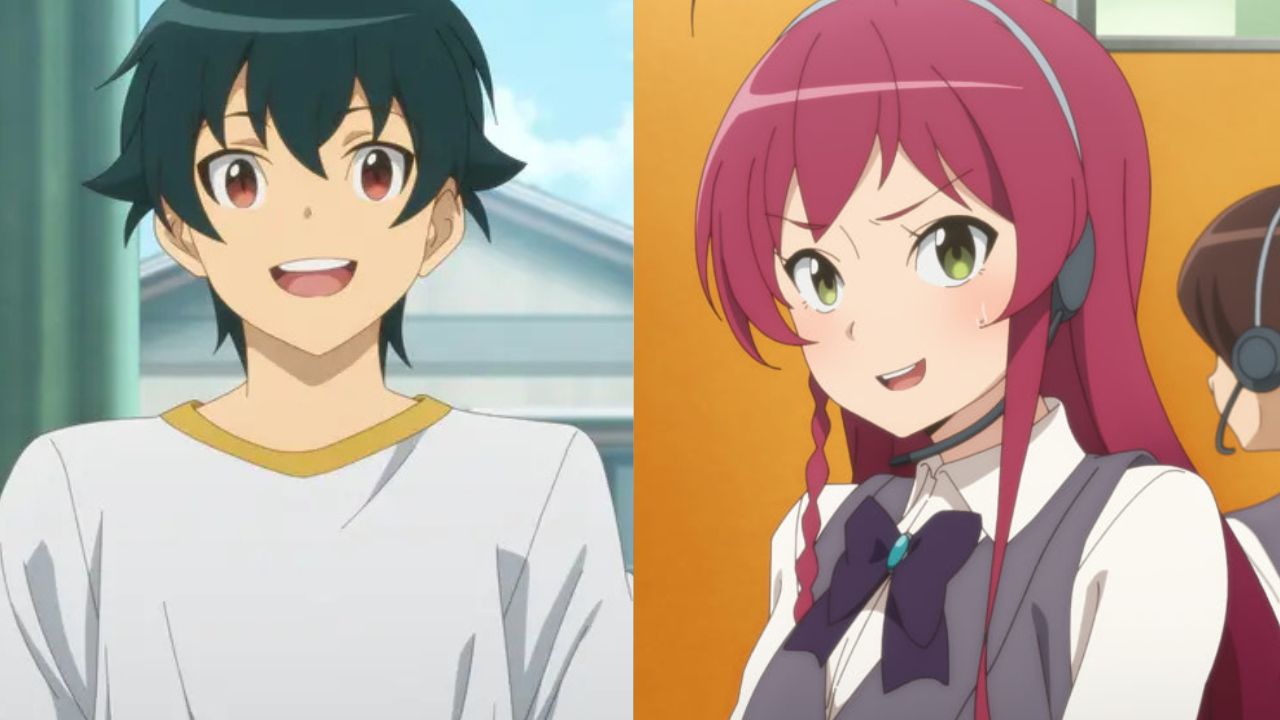
Although The Devil is a Part-Timer! mainly focuses on Sadao’s day-to-day life, it still features a significant amount of worldbuilding related to Ente Isla.
The story gradually reveals more about the magical world, including the political struggles, religious conflicts, and the different races that inhabit it.
Even on Earth, remnants of magic and otherworldly powers occasionally come into play, reminding viewers of the fantasy elements lurking beneath the surface.
At its core, the anime goes into themes of adaptation and redemption. The characters handles their new circumstances, often rethinking their original goals and beliefs.
For Sadao, this means moving away from his ambitions of world domination and finding a new sense of purpose in helping others, even if it’s just through his work at the fast-food joint.
The story cleverly blends comedy with moments of reflection, showing that even the most unlikely characters can grow and change.
The Devil is a Part-Timer! is a unique isekai that balances everyday life with fantasy elements. By placing powerful characters in ordinary situations, it offers a humorous yet thought-provoking look at what happens when magic meets the mundane.
The series presents an interesting twist on the genre, where survival isn’t about defeating monsters, but about fitting in and finding meaning in a completely different world.
6) Building a Nation in a World of Monsters and Magic in That Time I Got Reincarnated as a Slime
That Time I Got Reincarnated as a Slime begins with a typical office worker who meets an unexpected and gruesome end.
Instead of staying dead, he wakes up in a new world, but not as a mighty warrior or a powerful mage he’s reincarnated as a simple slime.
Rimuru is an unremarkable creature by appearance, but this new form brings with it unique abilities that allow him to absorb and mimic the powers of other creatures.
Despite starting off as a seemingly weak being, Rimuru soon discovers that his new life is full of possibilities.
As Rimuru goes through this strange world, he quickly learns to adapt and master his abilities. His powers grow rapidly, and he becomes capable of doing things that would have been impossible in his previous life.
This growth isn’t just limited to combat; Rimuru’s skills also help him interact with other creatures, forge alliances, and even build his own nation.
His journey is filled with action and humor, as he often finds himself in situations that test his newfound abilities and force him to think on his feet.
The world Rimuru finds himself in is vast and rich with detail, featuring various races like goblins, orcs, and dragons, each with their own cultures and societies.
This diverse setting adds depth to Rimuru’s adventures, as he doesn’t just encounter enemies to defeat but also potential allies and friends who shape his path.
The series takes time to flesh out the world’s history and politics, making the stakes feel real and creating a complex backdrop for the story.
This worldbuilding enhances the sense of adventure as Rimuru’s journey unfolds. Rimuru’s character development is one of the highlights of the series.
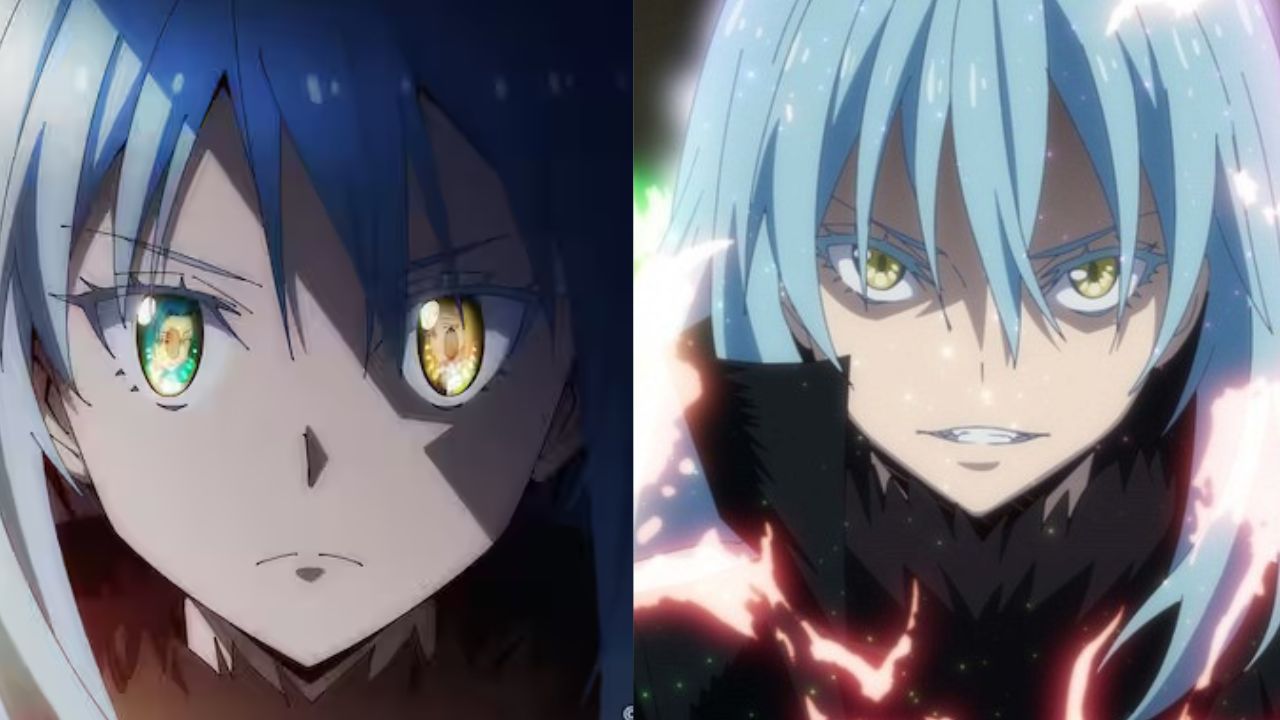
While he starts as an average person in an extraordinary situation, he quickly evolves into one of the most powerful beings in this new world.
His rise to power is both thrilling and entertaining, as he goes from battling monsters to negotiating with other leaders and building his own nation.
The series doesn’t just focus on Rimuru’s growth in strength but also on his growth as a leader and protector of his newfound friends and followers.
The third season of the anime shifts its focus from action to diplomacy, showing a different side of Rimuru’s responsibilities.
Instead of constant battles, the story is into political negotiations and the complexities of managing relationships with other nations.
This change in pace allows the series to go through themes of leadership, compromise, and the consequences of wielding great power.
Rimuru’s skills are tested in new ways as he handles the challenges of diplomacy and aims to ensure peace in a world full of conflict.
That Time I Got Reincarnated as a Slime offers a refreshing take on the isekai genre by combining action, adventure, and comedy with thoughtful worldbuilding and character growth.
Rimuru’s journey from an ordinary person to an extraordinary leader is amazing, and the series maintains a balance between thrilling battles and deeper moments of reflection.
The blend of humor, fantasy, and real-world themes like diplomacy makes it a standout story in anime.
7) Naofumi’s Struggle for Redemption in Rising Of The Shield Hero
The Rising of the Shield Hero tells the story of Naofumi Iwatani, who finds himself suddenly transported to a fantasy world while browsing in a library.
Although summoned as a hero to save the world, he quickly becomes an outcast when the people who brought him there turn against him.
Faced with distrust and false accusations, Naofumi still find a way to fulfill his role as a hero, despite the difficult circumstances, if he ever wants to return home.
The series goes beyond the typical fantasy setup by building a complex and immersive world.
The magical systems and rules governing the world are well thought-out, providing clear explanations for how things work, rather than leaving everything to magic alone.
This approach adds depth and realism, giving viewers a sense of how the world functions and what makes it unique from other isekai settings.
Villainous characters are given detailed backgrounds, revealing motivations and past events that shape their actions.
This allows for more layered storytelling, where adversaries aren’t simply evil for the sake of being evil but have reasons for their behavior.
The show also dives into themes of betrayal, redemption, and resilience, with Naofumi’s journey showing how a character can grow stronger in the face of adversity.
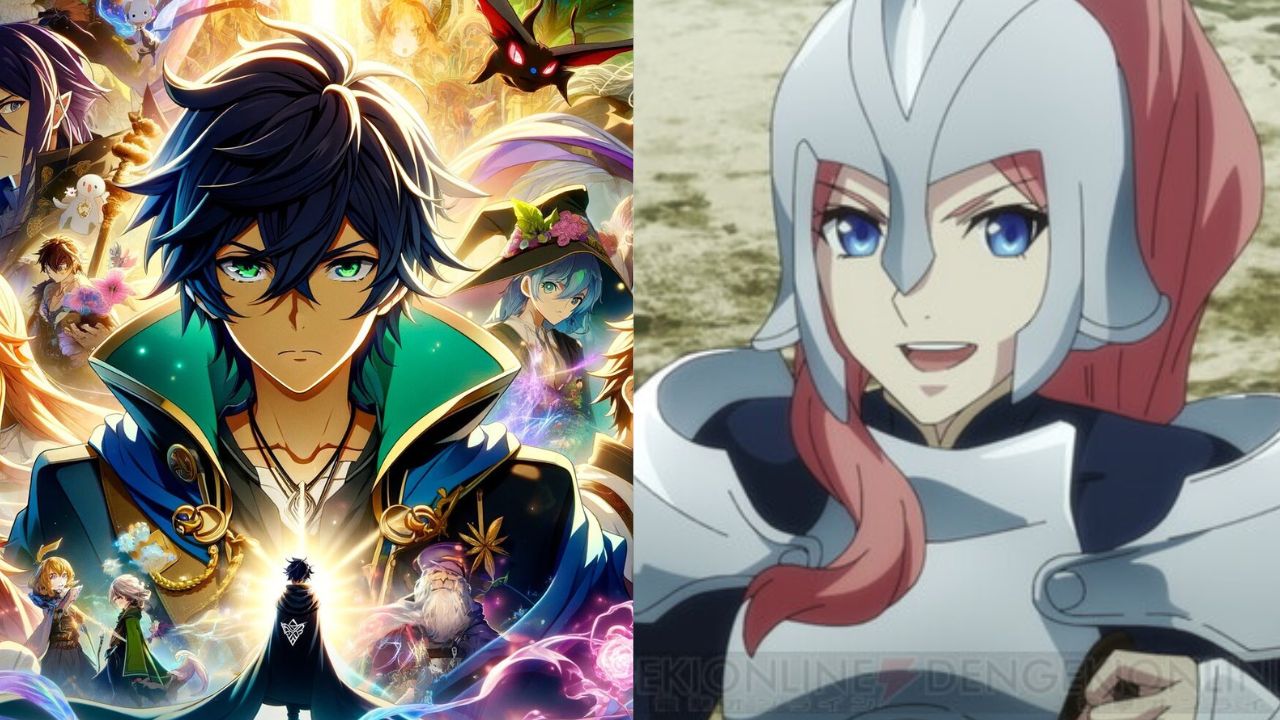
The fantasy world has its own intriguing history, which unfolds as the story progresses. Rather than dumping all the lore at once, bits and pieces of the world’s past are revealed gradually, keeping the audience curious and engaged throughout multiple seasons.
As Naofumi travels and grows, he encounters different regions and cultures within the world, each with its own customs and beliefs.
These cultural differences add to the worldbuilding, showing how diverse the inhabitants are and how their various backgrounds affect the story.
His relationships with the people he meets evolve, influencing the development of not just the characters, but the storyline itself.
The Rising of the Shield Hero offers more than just an adventure; it provides an evolving tale where both the protagonist and the world around him change over time.
Through challenges and revelations, the series maintains a gripping story, making it clear why Naofumi’s journey stands out in the crowded genre of fantasy and isekai anime.
8) The Depths of Yggdrasil’s Magic and Mysteries in Overlord
Overlord starts off inside a popular virtual reality game called Yggdrasil, where a powerful player named Momonga has spent countless hours building his character and his guild.
When the game’s servers are set to shut down, Momonga decides to stay logged in until the very last moment.
But instead of being logged out, he finds himself still in the game, which has somehow turned into a real world.
He is trapped in the body of his character, a powerful undead sorcerer, and the game’s non-player characters (NPCs) have become real, living beings who are loyal to him.
With his newfound reality, Momonga decides to embrace his character’s role as the dark overlord, taking on the name Ainz Ooal Gown, which was the name of his guild.
He sets out to go through this new world, searching for answers about why he is here and if there are other players like him.
Along the way, he and his loyal followers begin plotting to conquer the world, using their vast powers and resources.
The story unfolds with Ainz embracing his role as an all-powerful villain, with no hesitation in showing just how ruthless he can be.
The world of Overlord is full of variety, resembling a fully developed game with different races, magic systems, and jobs for its inhabitants.
From powerful warriors and mages to mystical creatures and monsters, the world offers endless possibilities for adventure and conflict.
This richness makes every place Ainz visits feel unique and alive, filled with its own history and culture.
The world isn’t just a backdrop; it’s a central part of the story that influences how Ainz and his followers interact with it.
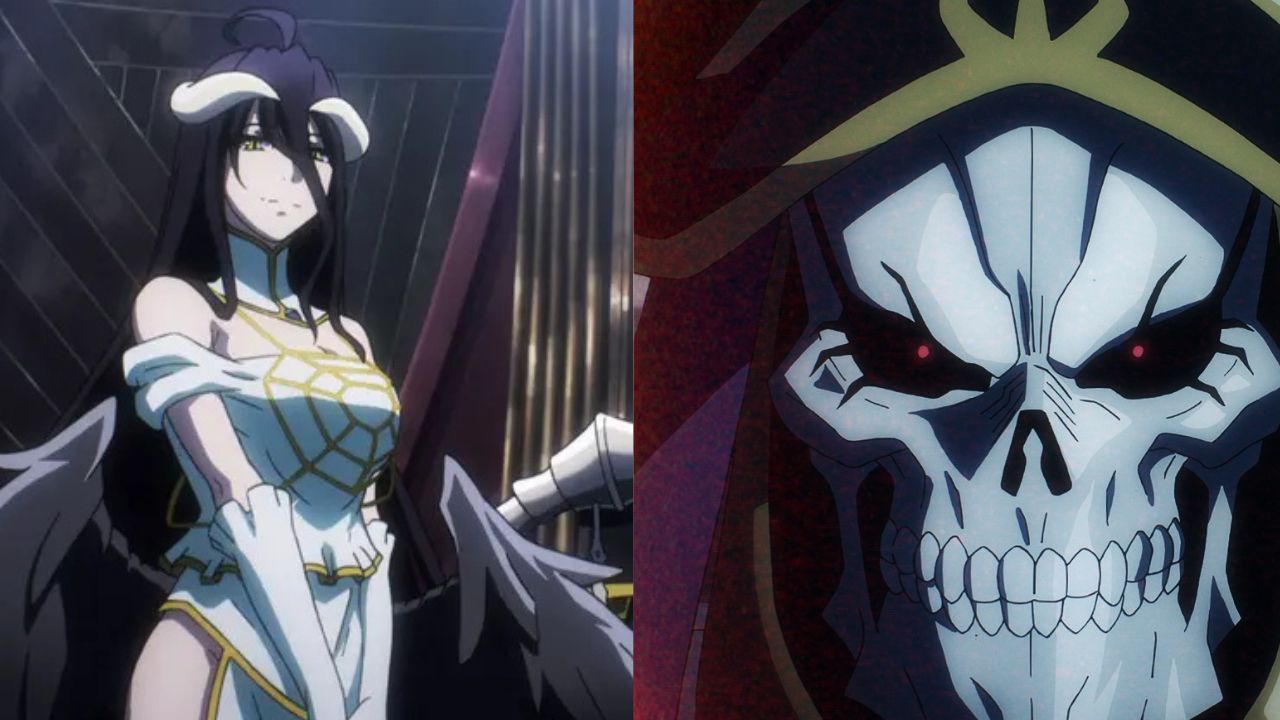
Ainz’s journey is marked by his incredible power, allowing him to crush any opponent that stands in his way.
He often finds himself in situations where enemies or potential threats underestimate him, only to be swiftly defeated by his overwhelming abilities.
This makes Overlord appealing for fans who enjoy watching an overpowered main character who can effortlessly achieve his goals.
Ainz uses his magic and strategy to outsmart and overpower those who challenge him, showing his cunning nature as well as his strength.
Each of his servants, who were originally NPCs, now has their own personality and goals, which makes them interesting characters in their own right.
They are fiercely loyal to Ainz, treating him like a god, and their interactions with him add depth to the story.
They form a tight-knit group that handles the dangers and politics of the new world, with Ainz leading them as their powerful and sometimes merciless master.
Overlord stands out because it offers a different take on the usual isekai story, focusing on a character who is not a hero but a villain.
The series explores what it means to be powerful in a world where strength is everything and how a once-normal player can adapt to being a feared overlord.
With its detailed worldbuilding, dark tone, and focus on Ainz’s rise to power, Overlord is a unique blend of fantasy and adventure that keeps viewers engaged as they watch Ainz’s story unfold.
9) Life Lessons in a World of Swords and Sorcery in Mushoku Tensei
Mushoku Tensei begins with a 34-year-old man who has lived a lonely and unfulfilling life. After a tragic accident, he finds himself reborn in a completely new world, starting life over as a baby named Rudeus Greyrat.
Even though he is now an infant, he retains all the memories and knowledge from his previous life. This gives him a rare opportunity to make the most of his second chance and to learn from the mistakes he made before.
As Rudeus grows up in this new world, he quickly discovers that it is filled with magic, strange creatures, and powerful people.
Unlike his old life, this world is full of adventure and challenges, offering him the chance to do things he could only dream of before.
Using the wisdom he has gained from his previous life, Rudeus tries to become a better person, facing both the exciting and difficult aspects of his new reality.
He learns magic at a young age and begins his journey to master it, all while dealing with his old trauma and regrets.
The world in Mushoku Tensei is much more than just a setting; it feels alive with its own unique history, politics, and cultures.
There are different regions and races, each with their own customs and traditions. The series doesn’t rush through its worldbuilding but instead takes the time to go through every detail, making it feel as real as possible.
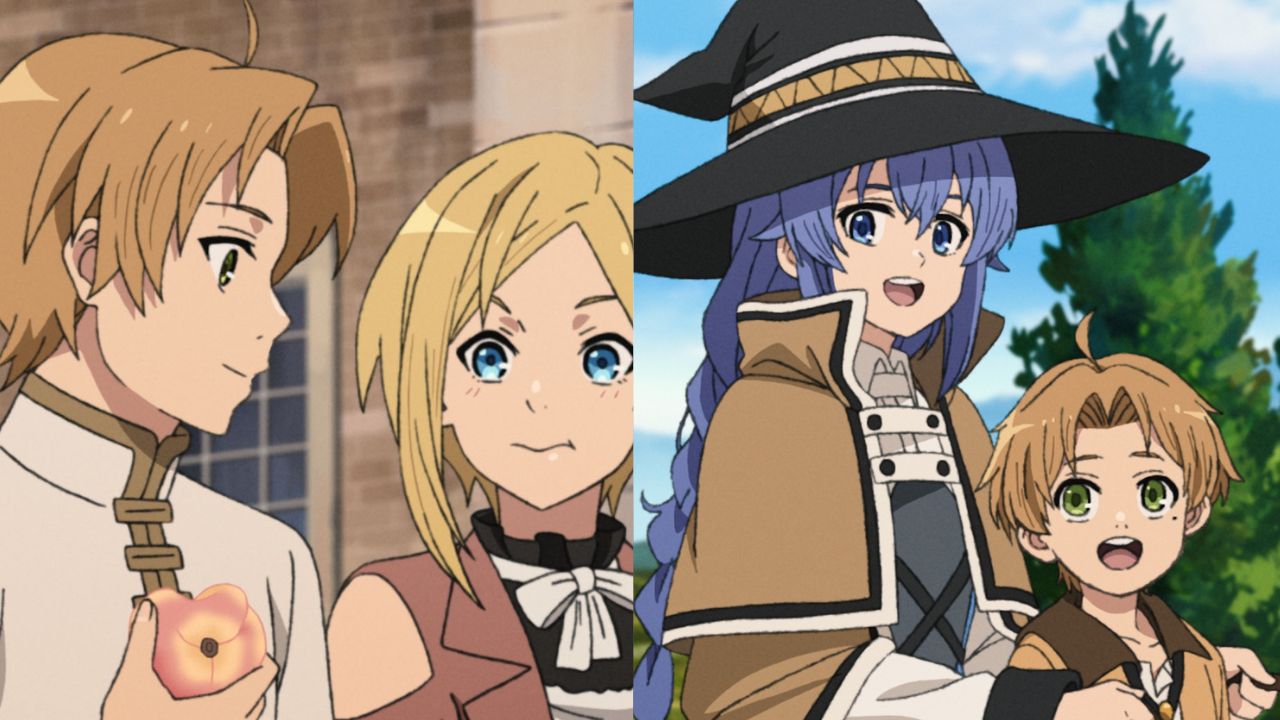
The complexity of this new world often reflects issues from the real world, giving the story a sense of depth and relevance.
Rudeus encounters a wide range of characters throughout his journey, each with their own stories and struggles.
These characters shape his growth, as he learns not just from books and magic but from his relationships with others.
Friends, mentors, and even enemies all play a role in helping him understand this new world and find his place in it. The bonds he forms, whether positive or negative, push him to grow in ways he never could in his past life.
Despite being reborn, Rudeus still has to face the shadows of his old life. His memories bring back feelings of guilt and disappointment that he cannot easily escape, and he often struggles to overcome these emotional burdens.
However, these struggles also give him the drive to keep improving himself and make this second life count.
The story focuses not just on the magical elements but also on Rudeus’ personal growth, making it a heartfelt journey of redemption and self-discovery.
Mushoku Tensei stands out as one of the best isekai stories because it carefully combines fantasy adventure with deep character development.
Rudeus’ journey is about more than just becoming stronger; it’s about understanding himself, healing from the past, and finding meaning in a new life.
The series takes its time to build a rich, immersive world while going through important themes like second chances, personal growth, and the complexity of human relationships.
10) The Strategic Gameplay of Log Horizon
Log Horizon immerses viewers in a fascinating story about 30,000 Japanese gamers who find themselves unexpectedly trapped in the MMORPG Elder Tale.
While the concept of being stuck in a video game is common in the isekai genre, Log Horizon distinguishes itself through its exceptional worldbuilding.
The series is crafted with a deep understanding of MMOs, showcasing various game mechanics that enhance both combat and story.
The structure and rules of Elder Tale are well thought out, contributing to a sense of realism within the fantasy setting.
Each character handles their new life using the unique skills and classes available in the game, allowing for diverse interactions and strategies.
This attention to detail in gameplay mechanics provides a solid foundation for the characters’ adventures, making their struggles and achievements feel grounded.
One of the standout features of Log Horizon is how it goes through the social dynamics within this virtual world.
The characters not only adapt to their new environment but also work together to establish a society from scratch.
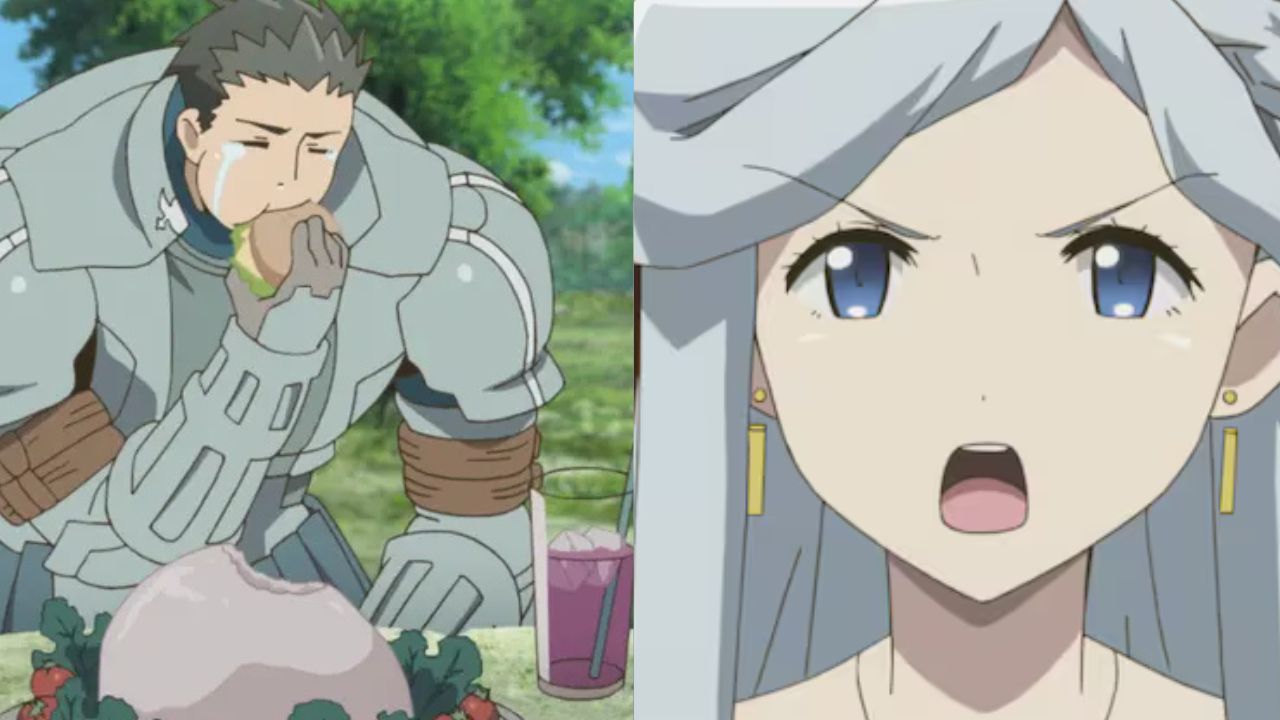
The series emphasizes the importance of cooperation and leadership, showcasing how these elements can be just as important as combat skills in overcoming challenges.
As the story unfolds, the audience is treated to a plethora of different races and classes that inhabit the Elder Tale world.
Each character brings their own unique strengths and abilities, leading to thrilling battles and creative problem-solving.
This variety keeps the action fresh and engaging, as viewers are continually introduced to new tactics and strategies that can be employed in the game.
The world of Elder Tale feels alive and ever-expanding, with layers of complexity that make it exciting.
The characters discover new areas, encounter various NPCs, and face unique monsters, all while uncovering the mysteries of their new reality.
The well-developed lore and environment provide ample opportunities for character growth and plot development, enriching the viewing experience.
Log Horizon stands out in the crowded isekai genre due to its meticulous attention to detail and engaging storytelling.
By focusing on the intricacies of MMO life and the importance of community, the series offers a unique take on the virtual adventure theme.
Fans of fantasy and gaming will find much to enjoy in this well-crafted series that goes beyond mere escapism to go through the complexities of life in a digital world.
11) A Salaryman Turned Ruthless Mage in The Saga of Tanya the Evil
The Saga of Tanya the Evil takes a different approach to the isekai genre, focusing on a dark and intense war story.
The anime follows Tanya Degurechaff, a ruthless salaryman who is reincarnated as a young girl in a parallel world as punishment for defying a powerful being known as Being X.
In this new life, Tanya survives as a soldier in a war-torn world where magic and military technology coexist.
She uses her cunning and tactical skills to rise through the ranks, all while trying to defy Being X and live a life of comfort away from the battlefield.
The world of The Saga of Tanya the Evil is built around a setting similar to early 20th-century Europe, but with significant differences due to the presence of magic.
The series portrays an alternate reality where large-scale conflicts are fought not only with traditional weapons but also with mages who wield powerful magical abilities.
The military strategies, political intrigue, and ongoing war between nations add depth to the world, making it feel like a lived-in place with its own history and rules.
The presence of magic gives the setting a unique flavor, allowing for aerial battles where soldiers equipped with magical devices engage in intense combat.
The blend of magic and technology creates a sense of realism, even in a fantasy setting. Tanya’s military unit, known as the 203rd Aerial Mage Battalion, often faces challenging missions that test their abilities and highlight the harsh realities of war.
This focus on tactical warfare and magical combat sets the anime apart from other isekai stories that lean more towards traditional fantasy themes.
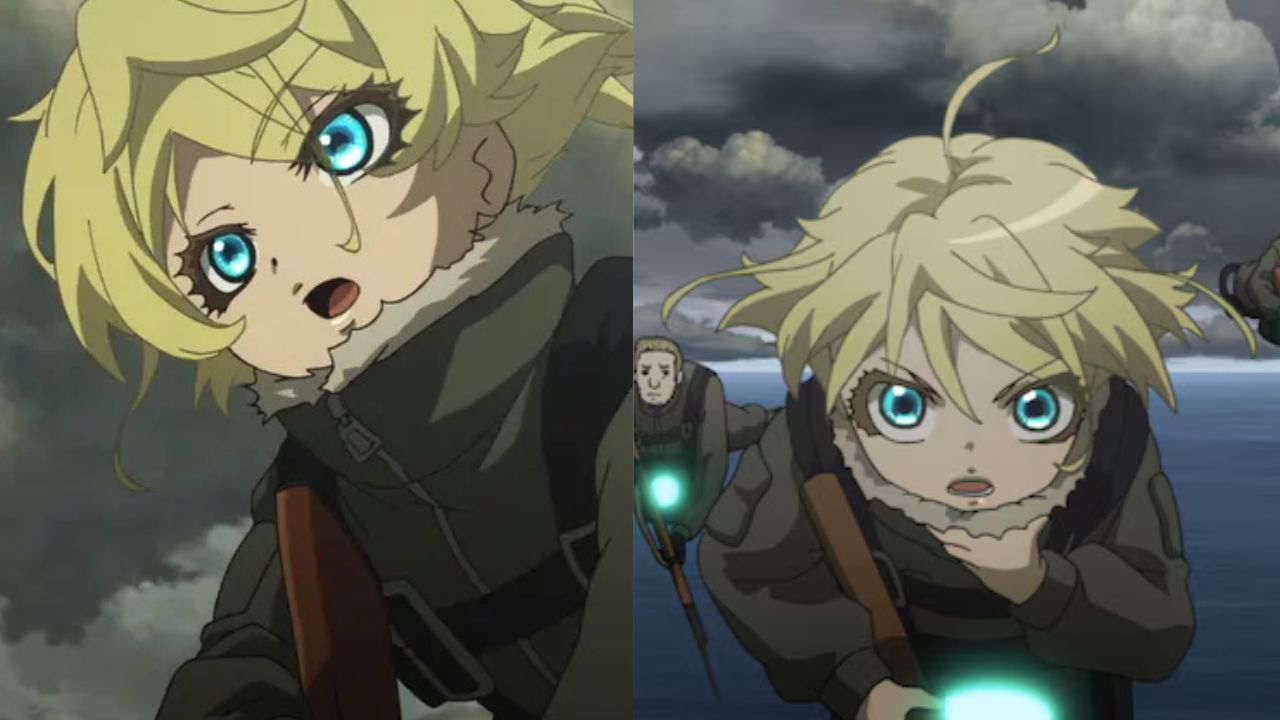
Tanya’s character development is also central to the story, as she struggles with her fate and tries to manipulate the world to achieve her goals.
Despite being a young girl in this life, Tanya retains the mindset of an experienced adult, using her intelligence and ruthlessness to handle military life.
Her inner conflict with Being X, who constantly meddles in her life, adds another layer to the story as she tries to defy divine intervention.
This clash between Tanya’s atheism and the supernatural forces at play adds a philosophical element to the series.
The war setting isn’t just a backdrop; it shapes the entire story and influences the characters’ lives.
It doesn’t shy away from depicting the grim nature of conflict, emphasizing how war affects not just the battlefield, but also society at large.
The ongoing conflict serves as a driving force in Tanya’s journey, pushing her to become a key player in the Empire’s military efforts.
The Saga of Tanya the Evil combines a compelling war story with elements of fantasy and isekai. The unique setting, character struggles, and philosophical themes create a gripping story that stands out from typical isekai anime.
By focusing on the harsh realities of war and Tanya’s efforts to outwit fate, the series presents a darker and more mature take on the genre.
12) GATE’s Approach to Harem Tropes in a War-Torn World
Gate brings a fresh twist to the isekai genre by focusing on what happens when a world of magic collides with modern technology.
The story begins when a mysterious portal opens in Tokyo, releasing fantasy creatures like dragons and knights, causing chaos in the city.
The Japanese Defense Force fights back to restore order and decides to cross through the gate into the other world.
Their mission is to establish relations and understand this new world, but they quickly encounter challenges along the way.
While Gate does include some common isekai themes, such as harem elements, it stands out for its strong worldbuilding.
The anime creates a believable mix of modern and magical worlds, showing what it might look like if a modern military force had to deal with powerful magic and mythical creatures.
This contrast between magic and technology brings a unique dynamic to the story, offering an exciting perspective on how two very different worlds might interact.
The series does a good job of giving attention to both worlds, with plenty of detail about the fantasy world’s magic, politics, and culture.
At the same time, the anime doesn’t shy away from showcasing the military strategies and technologies used by the Japanese forces.
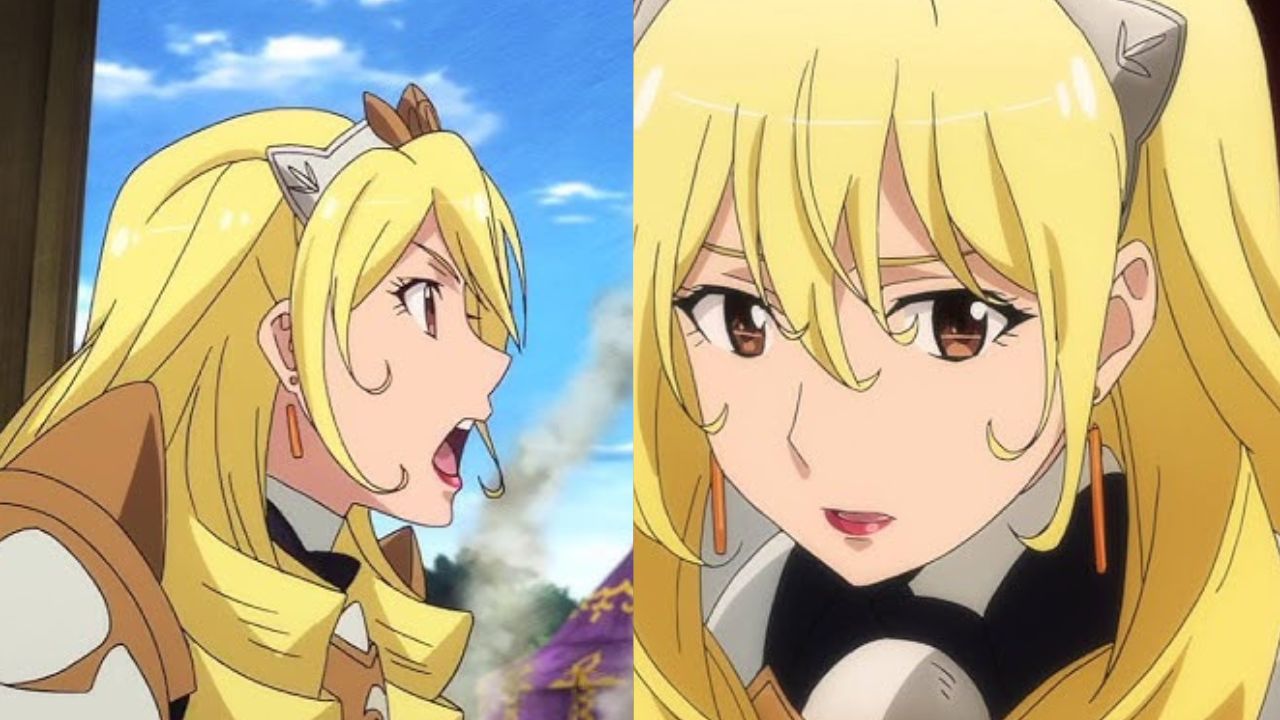
This balance allows viewers to see how each side approaches conflicts, making the story feel well-rounded and realistic.
Combat scenes are a major highlight of Gate, as they reflect the anime’s attention to detail when it comes to military tactics and weaponry.
The creators clearly put effort into researching modern equipment and strategies, which makes the action sequences feel authentic and engaging.
The story avoids giving one side an overwhelming advantage, allowing for more interesting and unpredictable battles.
The interaction between magic users and military forces adds depth to the conflict. The anime explains how each side learns to adapt to the other’s strengths and weaknesses.
For instance, modern soldiers have to figure out how to counter magic attacks, while the fantasy inhabitants are confronted with advanced weaponry they’ve never seen before.
This dynamic keeps the story interesting as characters on both sides evolve and learn from each encounter.
Gate offers a unique take on the isekai genre by combining fantasy elements with modern-day military action.
It not only goes through the excitement of traveling to a new world but also digs deeper into what happens when different realities collide.
This approach makes it more than just another adventure story and adds a layer of complexity that keeps the audience engaged.
13) Friendship in a Dangerous World in Grimgar, Ashes and Illusions
In Grimgar: Ashes and Illusions, a group of individuals finds themselves in a mysterious new world, stripped of their memories except for their names.
As they wake up in an unfamiliar world, they are bewildered and unsure of how they got there.
With no recollection of their past lives, they quickly realize that survival in this new world will require them to work together.
This premise sets the stage for a unique isekai experience that emphasizes character development and worldbuilding over typical fantasy tropes.
The characters in Grimgar quickly adapt to their surroundings. They come from different backgrounds and possess varied skills, which they leverage to handle the challenges ahead.
As they face powerful monsters and learn the harsh realities of their new life, the group forms strong bonds.
The anime takes the time to going through their struggles, fears, and aspirations, making each character relatable and endearing.
This focus on character relationships is one of the series’ greatest strengths, as it creates a deep emotional connection with the audience.
The world of Grimgar is richly crafted, featuring a diverse range of environments, from dense forests to treacherous caves.
The series excels in its detailed portrayal of the setting, immersing viewers in the beauty and danger of this fantasy land.
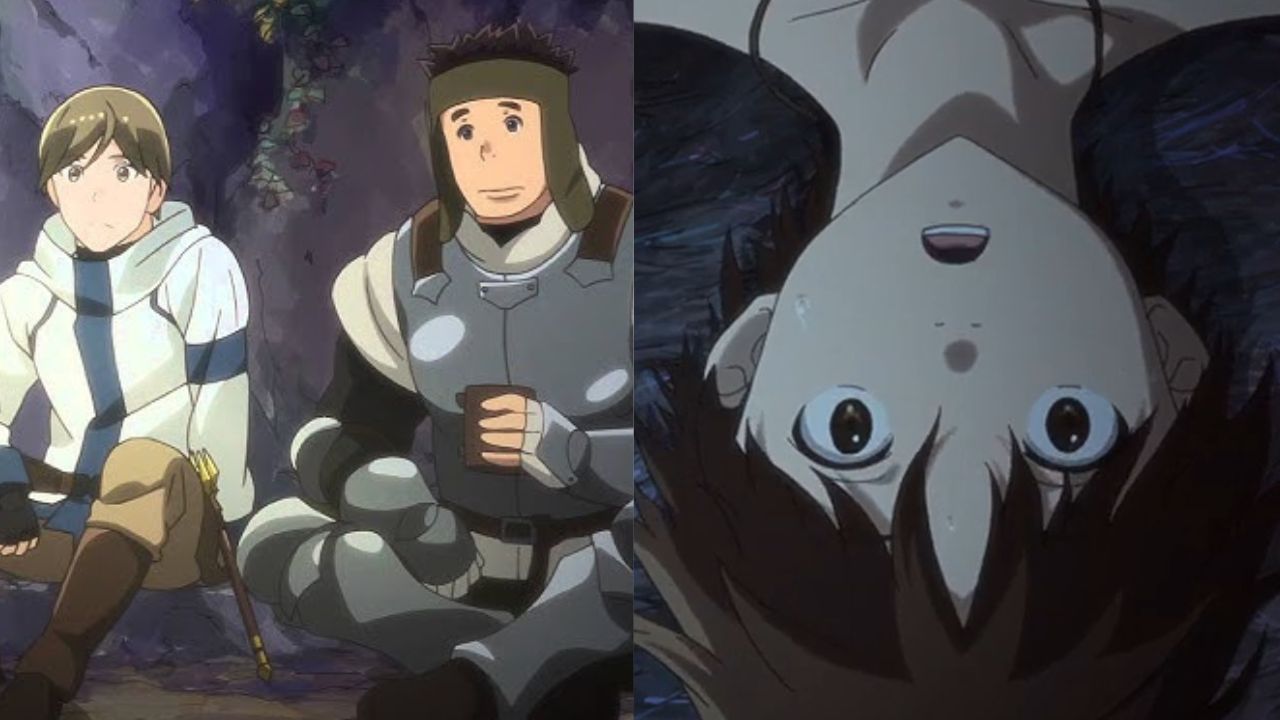
The characters constantly learn and adapt, honing their skills to defeat monsters that threaten their lives.
The anime effectively captures the grind of leveling up, presenting the challenges of resource management and teamwork in a way that feels authentic and engaging.
Survival in this world is not just about defeating enemies it also involves finding food and shelter. The characters often struggle with basic necessities, highlighting the dire circumstances they face.
Unlike many isekai series that focus on characters quickly gaining power, Grimgar emphasizes the slow, often painful process of growth.
This approach adds a layer of realism to the story, as the characters confront the consequences of their actions in a world where danger lurks at every turn.
Despite its short runtime, Grimgar manages to deliver a compelling story filled with poignant moments.
The anime balances action with introspective scenes, allowing viewers to reflect on the characters’ journeys.
Their evolution from scared newcomers to capable adventurers is portrayed with sensitivity and depth, showcasing their emotional struggles as they adapt to their harsh reality.
The storytelling shines through in its ability to evoke empathy, making viewers genuinely care about the characters’ fates.
However, one of the most significant drawbacks of Grimgar is its limited run. The single season leaves many story arcs unresolved, leaving fans longing for more of this amazing world and its characters.
While the anime introduces an intriguing premise and a beautifully crafted environment, its brief duration may disappoint those eager for a deeper look on the lore and development of the story.
Grimgar remains a standout in the isekai genre, celebrated for its unique approach to storytelling and character development.
14) A Hero’s Unintentional Battle in The Eminence in Shadow
The Eminence in Shadow tells the story of Minoru Kagenou, a young man who finds himself reborn in a magical world after dying in his previous life.
In this new world, he takes on the identity of Cid, a member of a noble family. While most people dream of being heroes or villains, Cid has a different goal in mind: he wants to become the mastermind behind the scenes, secretly controlling events and playing the role of the eminence in shadow.
To make this dream a reality, he starts building a secret group called Shadow Garden. Shadow Garden begins as a group of talented individuals whom Cid recruits, training them in combat and strategy.
Cid tells them about a mysterious enemy, the Cult of Diablos, which he initially made up as a way to motivate his followers and make his secret role more thrilling.
However, as the story unfolds, it turns out that the Cult of Diablos isn’t just a made-up story; it’s a real threat that has existed for a long time.
This twist adds an unexpected layer of seriousness to Cid’s quest, making his actions more meaningful than he ever anticipated.
Despite the serious threats he faces, Cid approaches everything with a playful mindset. He is determined to keep up the act of being a shadowy mastermind while continuing to develop his powers.
His skills grow tremendously, and he becomes one of the most powerful figures in this magical world. As Cid trains and hones his abilities, he faces countless battles and challenges, giving him opportunities to show off his strength and cunning.
His journey is not just about becoming stronger, but also about living out the fantasy of his role in the most dramatic and exaggerated way possible.
The series manages to balance humor and action by playing with typical fantasy and isekai elements, poking fun at common tropes while still delivering an engaging story.
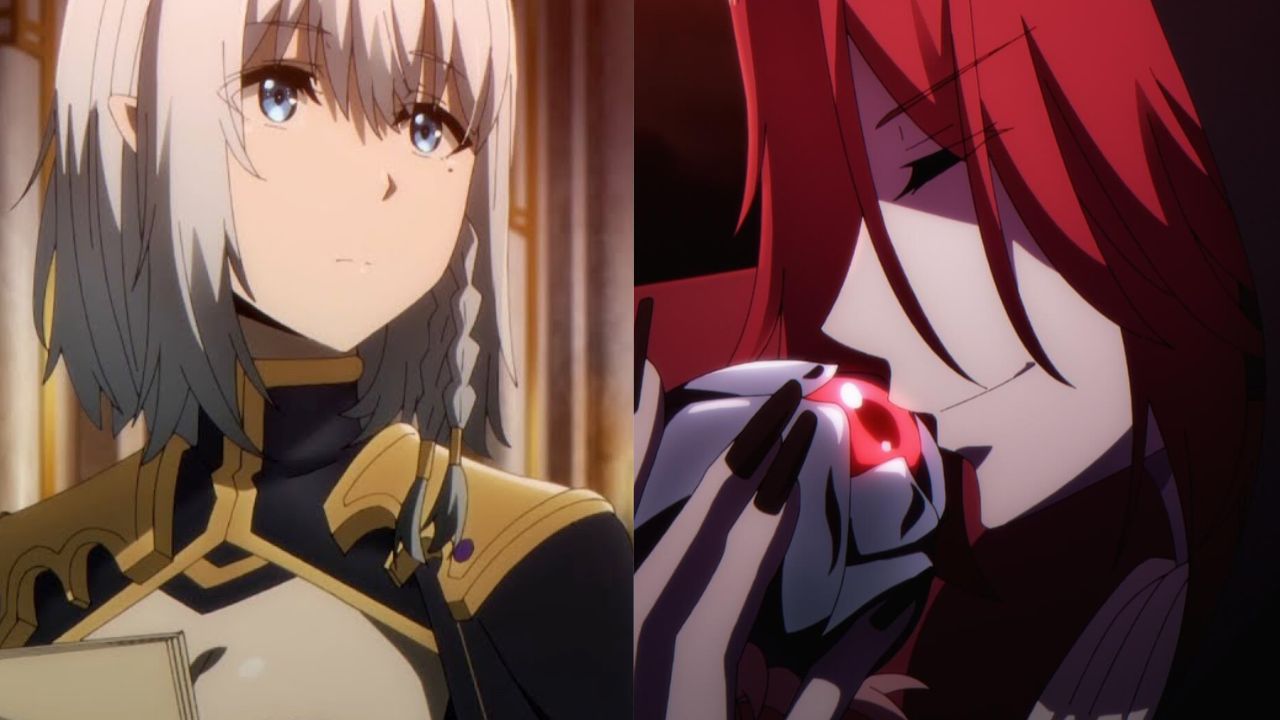
The characters around Cid, including the members of Shadow Garden, take the threat of the Cult very seriously, even though Cid himself still thinks it’s all part of a game.
This mix of different perspectives creates entertaining dynamics, as the story keeps a sense of unpredictability. Cid’s unaware involvement in real-world dangers adds to the comedic tone while still keeping the stakes high.
As the story progresses, the worldbuilding becomes richer, with detailed lore about magic, ancient secrets, and the history of the Cult of Diablos.
The world feels alive, full of mysteries waiting to be uncovered. Cid’s encounters with powerful foes and hidden organizations gradually reveal the deeper layers of this magical world, making the story more than just a parody.
It gives a sense that there’s always more going on beneath the surface, and Cid’s journey to become the ultimate eminence in shadow is only one part of a much larger picture.
The Eminence in Shadow offers an interesting mix of parody, fantasy, and action, making it enjoyable for fans of the isekai genre who like a blend of humor and serious storytelling.
Cid’s story is about living out an elaborate fantasy while also confronting real dangers, resulting in a unique take on the idea of being a hidden, behind-the-scenes hero.
The series isn’t just about defeating enemies it’s about embracing the thrill of adventure and creating a life full of excitement and intrigue.
15) The Power of Literature in a Restrictive Society in Ascendance of a Bookworm
In Ascendance of a Bookworm, the story revolves around Mayne, a girl who has an insatiable love for books. Her passion for reading is so deep that it defines her character and shapes her desires.
However, her life takes a drastic turn when she is reincarnated into a medieval world where books are a luxury only accessible to the wealthy.
This twist creates a tragic plot for someone whose greatest joy is reading, highlighting the obvious contrast between her previous life and her new reality.
The series beautifully goes through Mayne’s quest to reclaim her love for books in a society that limits access to knowledge.
Rather than pursuing power or glory like many typical isekai protagonists, Mayne’s singular goal is to build her own library.
Her determination to create a space where she can read and learn reflects her genuine passion for literature.
This focus on her personal dream makes her journey relatable and heartwarming, setting her apart from other characters in the genre.
Mayne’s challenges in the new world are profound and often daunting. As she handles a society that views books as a privilege, she finds creative solutions to obtain the knowledge she craves.
This determination drives the plot forward, as her resourcefulness leads her to invent new ways to create and share books, even in the face of societal restrictions.
Her resilience not only showcases her character development but also serves as an inspiration to viewers who appreciate the importance of knowledge and learning.
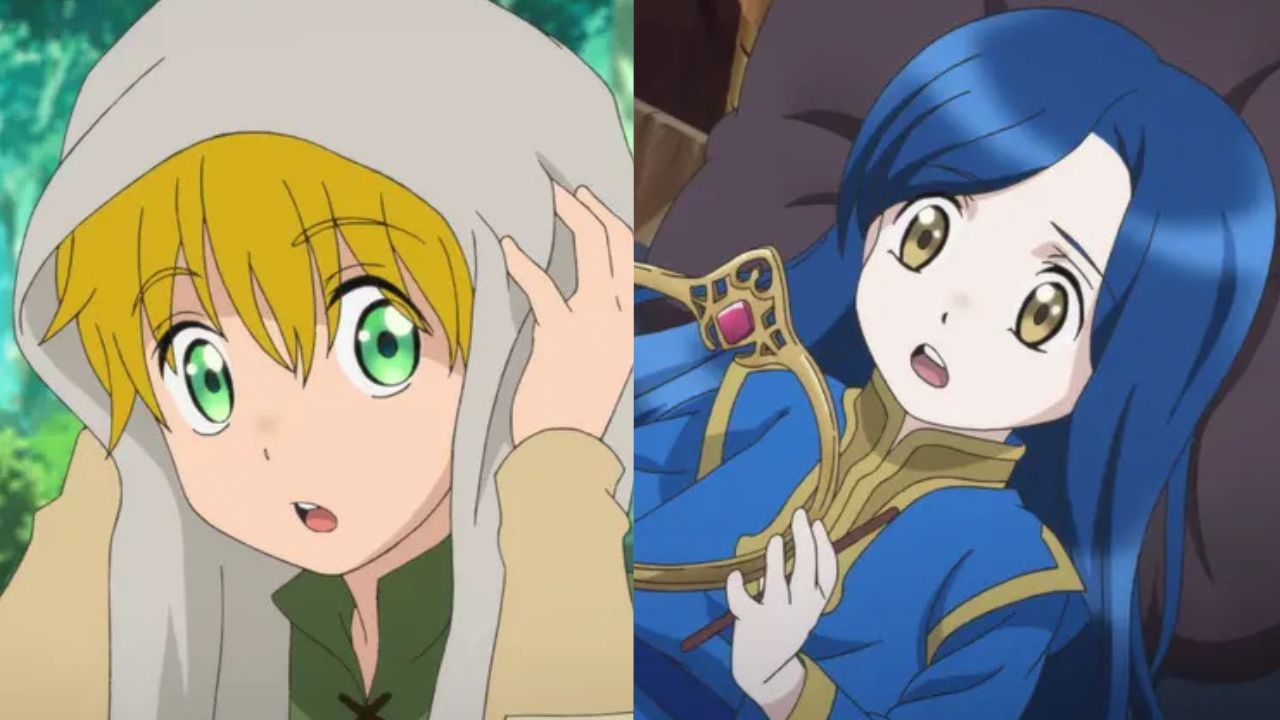
The worldbuilding in Ascendance of a Bookworm is exceptionally well crafted, with the author taking great care to create a believable medieval setting.
The intricacies of the culture, economy, and politics are revealed through Mayne’s experiences, making the environment feel alive and immersive.
The focus on the book trade and the societal value placed on literacy adds depth to the story, allowing viewers to see how these elements influence Mayne’s journey and the lives of those around her.
While the plot remains straightforward and easy to follow, it does not lack in richness or complexity.
The author effectively weaves in themes of ambition, perseverance, and the transformative power of knowledge, ensuring that the story resonates with a wide audience.
Mayne’s humble quest to build her library evolves into a larger commentary on accessibility and the democratization of knowledge, making it a thought-provoking tale within the isekai genre.
Ascendance of a Bookworm stands out as a unique addition to the isekai world. With its female lead who prioritizes her love for reading over conventional notions of power, the series delivers an uplifting story filled with charm and creativity.
Mayne’s adventures are not only entertaining but also serve as a reminder of the value of knowledge and the lengths one will go to nurture their passions, making it a beloved series among fans of the genre.
16) A Magical World Built on Ancient Secrets in The Faraway Paladin
In The Faraway Paladin, the story revolves around Will, a young boy who finds himself reincarnated in a mysterious and magical world.
Rather than encountering danger or hostility from terrifying creatures, Will is raised by three undead guardians: Blood, a warrior skeleton Gus, a wise ghost; and Mary, a caring mummy.
These unconventional mentors aren’t the monsters they initially appear to be. Instead, they take on the roles of family and teachers, imparting wisdom and life skills to Will, preparing him for the challenges that await in this new world.
The anime doesn’t just focus on Will’s upbringing, but also dives deep into the nature of the world itself. It’s more than just a fantasy setting; it’s a place rich with history and legends.
As Will grows and learns from his guardians, he also uncovers the deeper stories behind the world’s magic, gods, and ancient conflicts.
This worldbuilding adds layers to the story, making it feel like a fully developed world with its own rules and traditions, rather than just a backdrop for the characters.
Will’s upbringing is filled with moral and philosophical lessons, as his guardians not only teach him how to fight but also what it means to live with purpose and integrity.
Blood shares the principles of a warrior’s honor, Mary teaches him faith and compassion, and Gus guides him in the art of magic and strategy.
They shape Will into a well-rounded individual, setting him on a path to becoming a true paladin. Their teachings go beyond combat skills, instilling in him a sense of responsibility and a desire to protect others.
The bond between Will and his guardians grows stronger as he learns more about their pasts and why they chose to look after him.

Each of them has a story of their own filled with regret and redemption, which Will learns about over time.
Their experiences and the choices they made in life resonate deeply with him, motivating him to find his own way.
Will’s journey isn’t just about gaining power it’s about understanding what it means to live a meaningful life in a world filled with both light and darkness.
As Will matures, he sets out from the comfort of his childhood home to explore the wider world. This step marks the beginning of his journey as a paladin, where he encounters new friends, faces dangerous foes, and uncovers the secrets of the land.
The story evolves into a coming-of-age tale where Will handleshis responsibilities as a protector while also discovering the true nature of his world and its gods.
His adventures challenge his beliefs and force him to grow beyond the teachings of his guardians.
Fans of The Faraway Paladin will find that the anime adaptation captures the essence of Will’s journey but doesn’t delve as deeply into the worldbuilding as the original light novel and manga do.
These sources provide more detail about the lore, character backgrounds, and the world’s complex mythology, making them a worthwhile read for those who want to experience the story in greater depth.
The series stands out for its thoughtful approach to isekai themes, focusing not just on adventure, but also on the growth and development of a young boy raised by unlikely mentors.
17) A High School Student’s Journey into Rulership in The Twelve Kingdoms
The Twelve Kingdoms begins with high school student Youko Nakajima being abruptly taken away from her ordinary life when a mysterious man appears in her classroom.
He tells her she is destined to be the ruler of his kingdom, and before she knows it, she and two classmates are swept into a strange and dangerous world.
This new world is full of mythical creatures and political intrigue, far different from the life Youko has known.
Unlike many modern isekai stories, Youko does not immediately have all the answers, and her journey is marked by struggle and growth.
Once in the new world, Youko faces a series of trials that challenge her both physically and emotionally.
She has to come to terms with the idea that she may be the rightful ruler of a kingdom, while also dealing with feelings of doubt and insecurity.
Her companions find themselves in similarly difficult situations, with each character facing unique challenges that force them to adapt to the harsh realities of this unfamiliar world.
The story emphasizes Youko’s gradual transformation from a confused teenager into a strong and capable leader.
The worldbuilding in The Twelve Kingdoms is exceptionally detailed, with each of the kingdoms having its own culture, government, and customs.
This richness adds depth to the story, as Youko encounters different societies and learns about the history and politics that shape the world she handles.
The series takes the time to develop the setting, making each kingdom feel distinct and well thought out, rather than just a backdrop for the characters’ adventures.
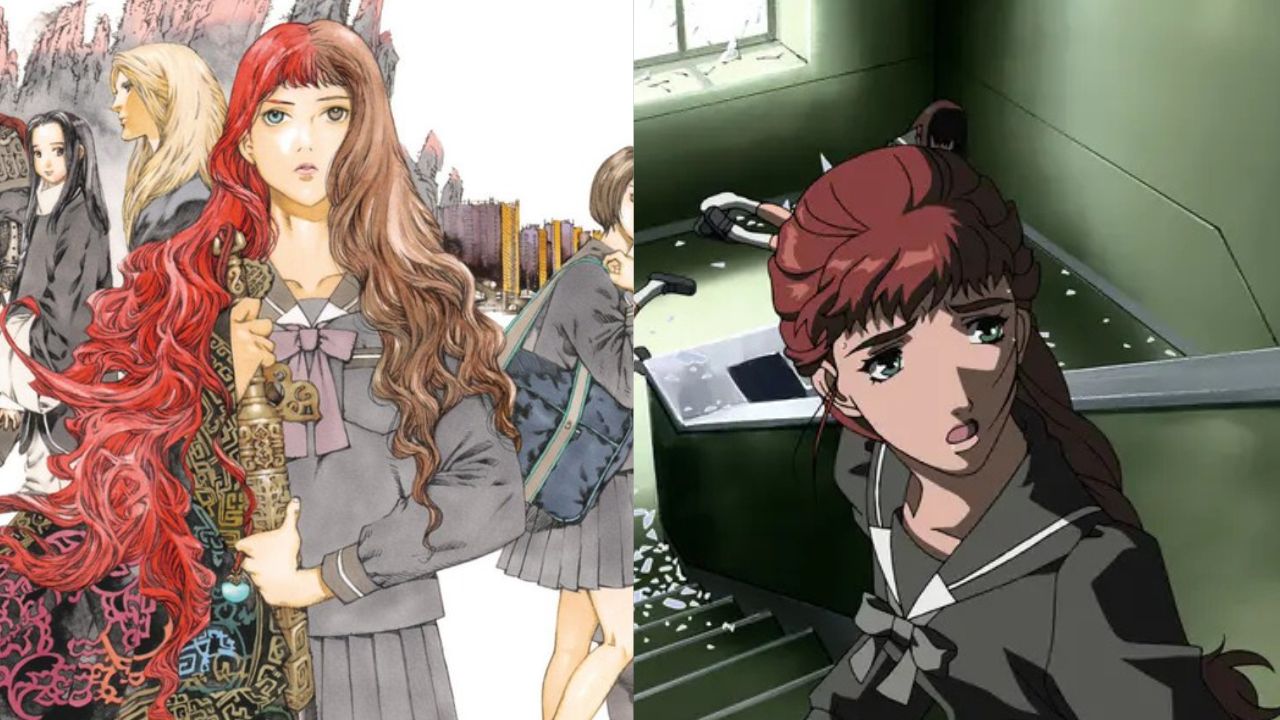
As Youko travels through the Twelve Kingdoms, she discovers that the world is not as simple as it first seemed.
The series explores complex themes like power, responsibility, and identity, as Youko grapples with her newfound role and the expectations placed on her.
Rather than being an all-powerful hero from the start, she has to learn how to lead, make difficult decisions, and earn the respect of the people around her.
This journey is not straightforward, and Youko’s path is filled with setbacks that test her resolve.
The adaptation of the original novels does an excellent job of capturing the spirit of the source material.
It carefully selects elements from the books to bring the world and its characters to life in a way that feels authentic.
The anime does not rush through the story but takes its time to explore the intricacies of the setting and the growth of its characters.
Each episode offers new perspectives and introduces different parts of the fantasy world, keeping the story fresh and engaging.
The Twelve Kingdoms stands out as a classic isekai that balances fantastical adventure with deep character development and intricate worldbuilding.
The story is about more than just escaping to another world it is about confronting inner fears, understanding what it means to be a leader, and finding one’s place in a complicated world.
Youko’s transformation from a lost student to a determined ruler serves as the heart of the series, making it a memorable and meaningful tale of self-discovery and resilience.
18) A Different Kind of Hero in a Fantasy World in Drugstore in Another World
Drugstore in Another World is an isekai story with a different approach, focusing less on combat and more on everyday life in a fantasy world.
Instead of a powerful warrior, the main character, Reiji Kirio, just wants to run a small medicine shop and help people.
In his previous life, Reiji was an ordinary office worker, but after being transported to this new world, he discovers that his knowledge of medicine gives him a unique skill set.
He uses these abilities to create various potions and remedies, benefiting the people around him. The series centers around Reiji and his employees as they go about their daily routines in the shop, creating a slice-of-life atmosphere.
The story may seem simple, but there is a lot of subtle worldbuilding that adds depth to the setting.
The existence of a war between humans and the demon king is a constant background element, and it impacts many aspects of the characters’ lives.
Reiji’s skills become even more important as his remedies are in high demand, not only for villagers but also for adventurers who seek his expertise.
Despite not being a typical action-driven isekai, the anime offers a brief look into the fantasy world’s culture and economy.
The interactions between Reiji and his customers often reveal more about the surrounding world, including its challenges and customs.
The story also shows how important healing and support roles can be, even in a world where combat is often glorified.
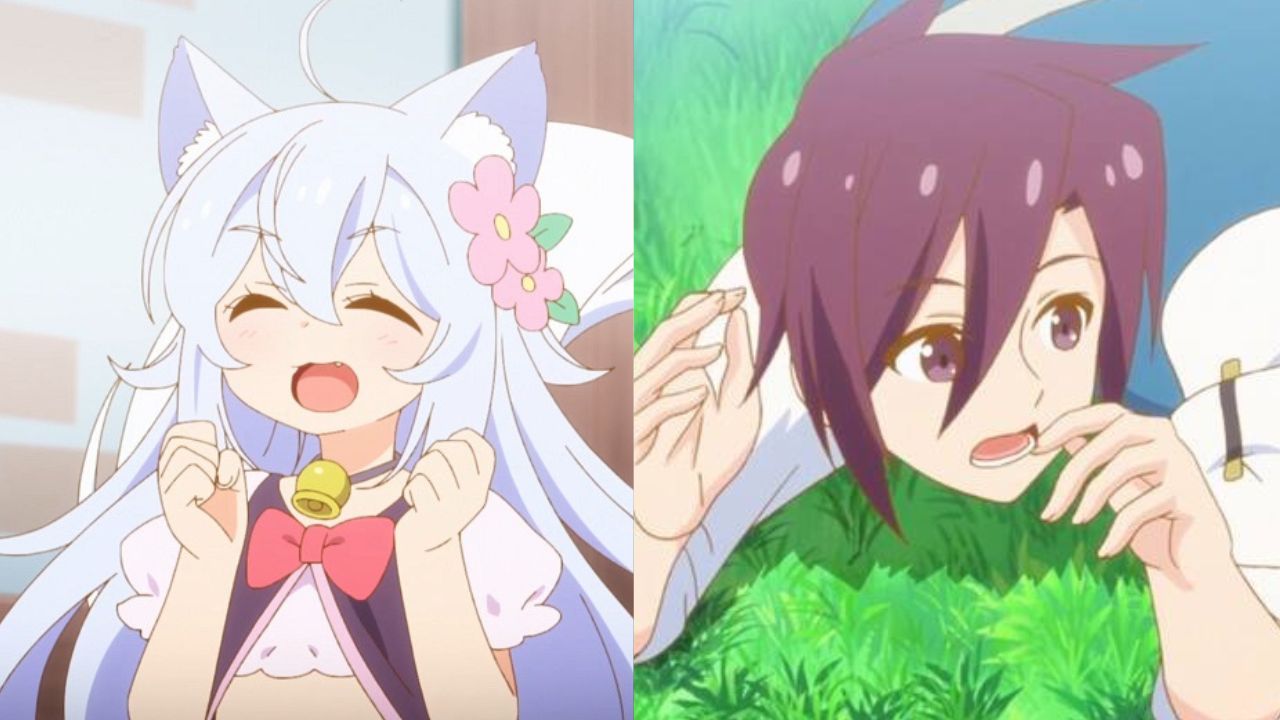
It highlights the significance of small acts of kindness in a world filled with danger. Reiji’s approach to helping others is not just about mixing potions; it involves understanding his customers’ needs and finding creative solutions.
This focus on problem-solving brings a unique charm to the series, allowing viewers to see the care and effort that goes into the preparation of each remedy.
From soothing potions for common ailments to special concoctions for adventurers, every creation tells a story about the people who need them and the challenges they face.
The anime also explores the relationships between Reiji and his shop’s employees, who each bring their own quirks and skills.
These characters add humor and warmth to the story, making the shop feel like a family rather than just a business.
Their interactions with Reiji and the customers help to flesh out the world and create a sense of community, emphasizing the impact of everyday life on the broader fantasy setting.
Drugstore in Another World offers a refreshing take on the isekai genre by focusing on healing and everyday experiences rather than epic battles.
Through Reiji’s work, the anime provides an insight into a fantasy world that values support and care, showcasing how even the smallest roles can make a big difference in a world filled with adventure and conflict.
19) Chinese Mythology and History in a Fantasy World in Fushigi Yuugi
Fushigi Yuugi is a classic isekai anime that tells the story of Miaka Yūki, a high school girl who gets transported into a magical book called The Universe of the Four Gods.
In this new world, Miaka is chosen to become the Priestess of Suzaku, a powerful deity, and is tasked with gathering the seven Celestial Warriors to summon the god and grant her wishes.
The story blends elements of adventure, romance, and fantasy as Miaka faces various challenges in this ancient China-inspired world, all while trying to return home.
Unlike many isekai that emphasize combat and battles, Fushigi Yuugi focuses more on the emotional journey of its characters and the complex relationships that develop.
Miaka’s primary goal is to protect her loved ones and fulfill her duties as the Priestess, but her path is complicated by love triangles, betrayal, and political intrigue.
The series explores the deep bonds that form between Miaka and her Celestial Warriors, highlighting themes of loyalty and sacrifice.
The world of Fushigi Yuugi is rich with cultural references and mystical lore, offering viewers a detailed setting that feels both foreign and familiar.
The story is influenced by Chinese mythology and history, featuring elements like sacred beasts, ancient prophecies, and martial arts. This combination of the mythical and the historical adds depth to the worldbuilding, making the setting more immersive for the audience.
As Miaka handles through the trials in this unfamiliar world, she encounters not just magical enemies, but also moral dilemmas and ethical questions.
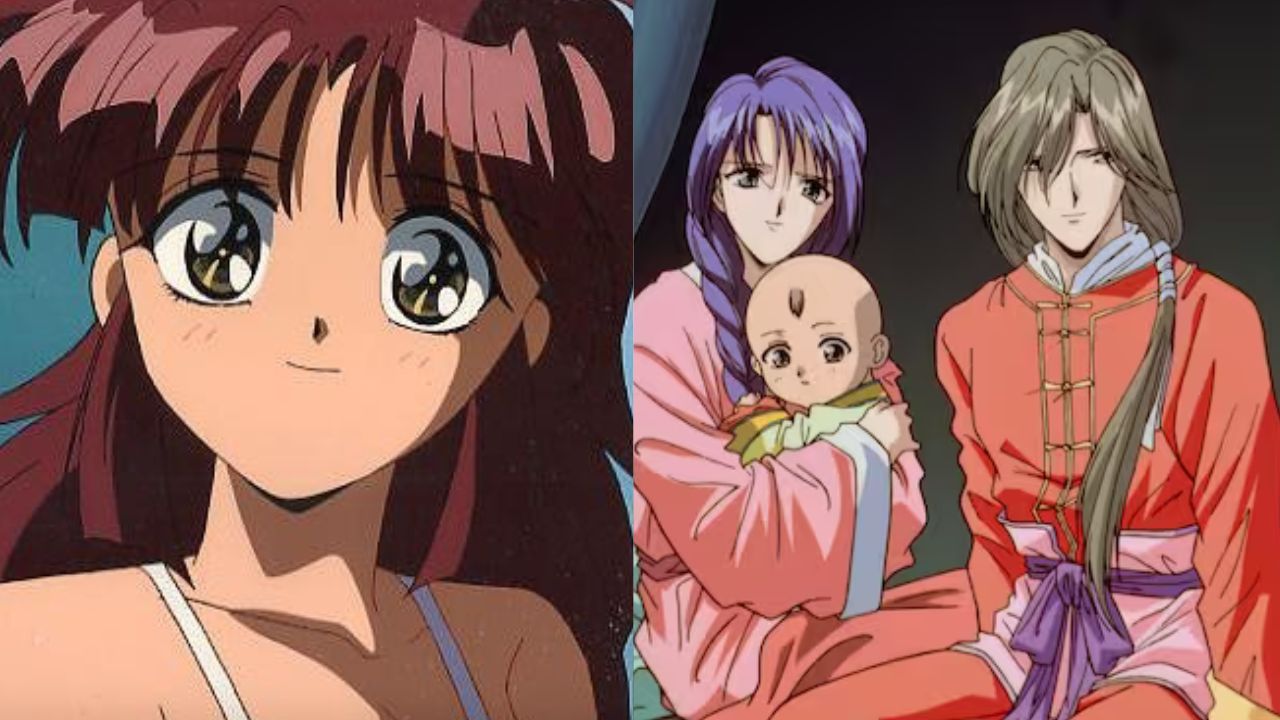
The anime explores themes such as duty versus desire and the consequences of wielding great power.
These challenges push Miaka to grow from a typical teenage girl into a strong and resilient leader, showing her development throughout the story.
The worldbuilding in Fushigi Yuugi extends beyond Miaka’s journey, as the politics between the rival kingdoms add layers of tension to the plot.
With the different nations vying for power and each having its own priestess and set of warriors, the story becomes a complex variety of alliances and conflicts.
This geopolitical backdrop provides context for the characters’ actions and decisions, making the world feel more complete.
Fushigi Yuugi combines an emotional character-driven story with a richly detailed fantasy setting.
The story’s blend of personal growth, romance, and mythical elements make it stand out among isekai anime.
Its focus on the emotional aspects of its characters’ struggles and the intricate worldbuilding ensures that it remains a beloved classic.
20) Sacrifice and Responsibility in Magic Knight Rayearth
Magic Knight Rayearth is a classic isekai anime from the mid-90s that doesn’t follow many of the familiar tropes found in more modern isekai stories.
The plot starts with three middle school girls being transported to the mystical world of Cephiro, where they are immediately tasked with saving Princess Emeraude, who has been captured by the high priest Zagato.
Fortunately, the girls have powerful elemental magic to help them, along with giant mechas known as Rune Gods, which they use in their quest.
At first glance, the series appears to be a straightforward fantasy adventure, but as the story progresses, it becomes clear that there’s much more going on.
The second half of the anime introduces unexpected twists that significantly deepen the plot. The world of Cephiro is sustained by the prayers of a Pillar, a figure who dedicates their entire life to keeping the world safe.
However, complications arise when the current Pillar, Princess Emeraude, starts to desire something other than her sacred duty.
This twist challenges the seemingly perfect system of Cephiro, leading to questions about whether one person should carry such a heavy burden for an entire world.
As the girls learn more about the truth behind the Pillar’s role, they face difficult moral choices that complicate their original mission.
The idea that Cephiro’s well-being depends entirely on the will and sacrifice of one individual adds a layer of tragedy and complexity to the story.
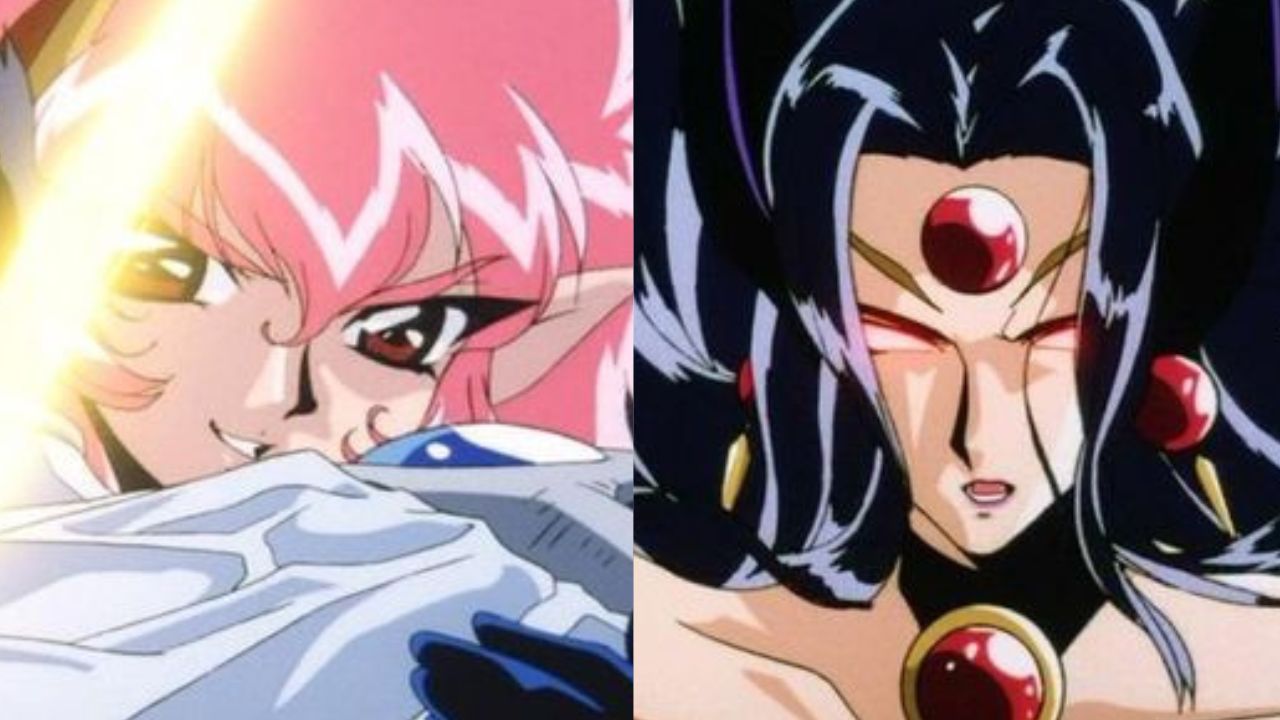
The anime not only focuses on epic battles and magical powers but also explores the consequences of a system that demands complete devotion at the cost of personal happiness.
By blending elements of traditional fantasy with deeper philosophical questions, Magic Knight Rayearth manages to stand out among other isekai tales.
The series tackles themes of duty, sacrifice, and the weight of expectations, making it more than just an adventure story.
The girls come to terms with the reality of the world they’re trying to save and decide if the ends truly justify the means.
Their growth as characters, shaped by these challenging experiences, adds a more profound dimension to their journey.
Magic Knight Rayearth remains a standout isekai series because it goes beyond the typical quest story, offering viewers an intricate plot that still resonates today.
Its thought-provoking approach to world-building and character development makes it a memorable and impactful story, even decades after its original release.

